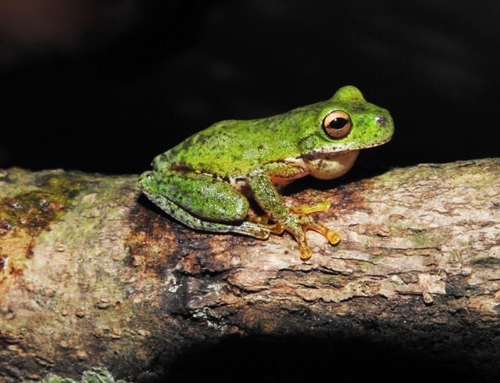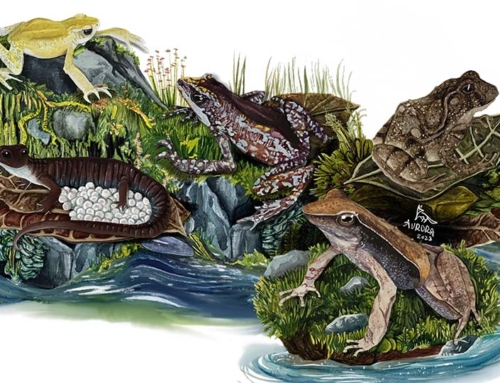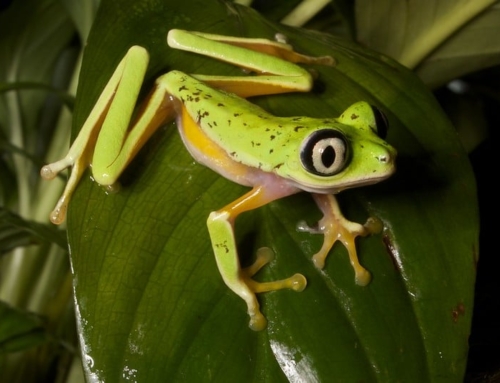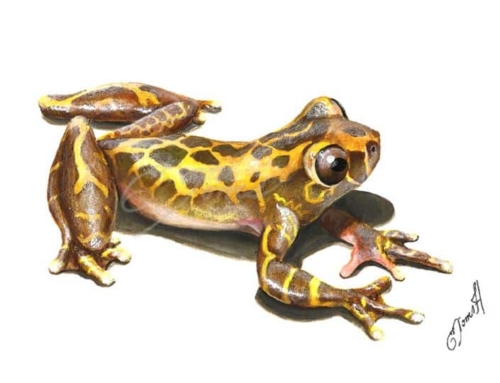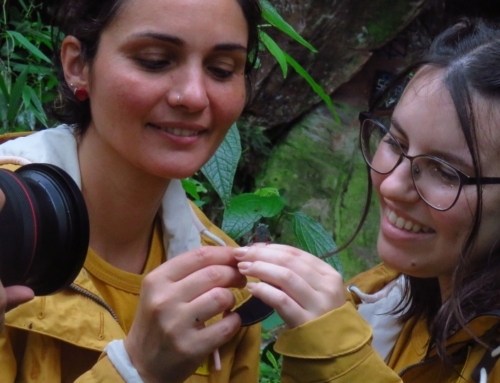Amphibians occupy a complex place in cultures around the world. Throughout history, these vibrant, shape-shifting creatures of land and water have been met with both wonder and hostility.
In the first part of this new series Amphibians and Culture, Senior Programme Officer Pria Ghosh discusses how European societies constructed negative views of amphibians through storytelling—and how shifting those narratives is central to more effective conservation in the future.
Amphibians inhabit the boundaries of worlds, crossing between environments and radically transforming between life stages in a way that has fascinated humanity for generations.
They come in all shapes and sizes, boast a stunning array of colours, and live everywhere from the desert to the rainforest. The touch of some could kill you in an instant; others are teaching us new ways to heal ourselves. Their presence signals changing weather patterns, and therefore announces times of prosperity, but also the onset of storms and floods. Their name, amphibians, literally means ‘dual life’.
It’s perhaps not surprising that people all over the world have developed a vast range of relationships, folklore, and cultural traditions surrounding these creatures of land and water.
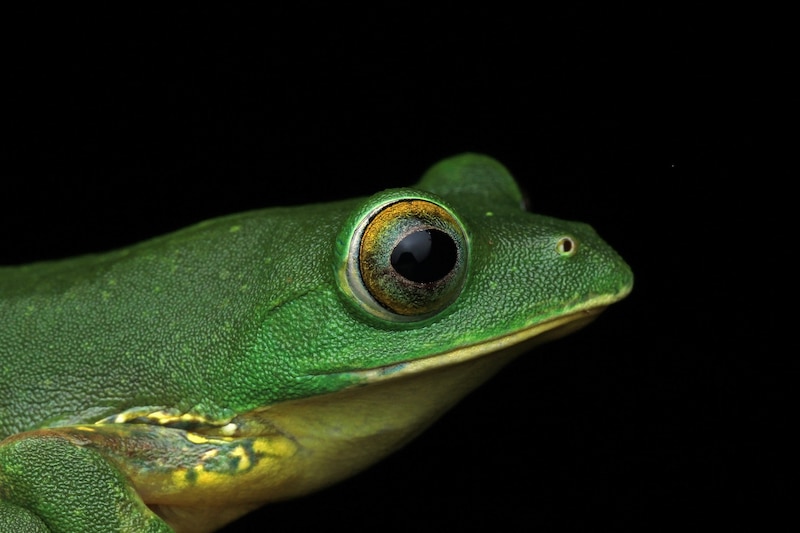
The stunning Anaimalai flying frog is native to India’s Western Ghats, where our partner Wildlife Trust of India works to conserve multiple threatened species of amphibians. Image: © Renjith Hadlee.
From garden pond to witches’ brew: a history of cultural hostility
Here in the UK, many people will have fond memories of finding tadpoles in garden ponds and watching them turn, as if by magic, into frogs as part of a school science project. Culturally, however, amphibians have not held a particularly revered position within our national folklore—they have a long association with dark magic and witchcraft.
One of the most famous mentions of the taxon is by the witches in Macbeth, who add “eye of newt and toe of frog” to their cursed brew. In fact, amphibians crop up surprisingly often in Shakespeare’s work, reflecting contemporary beliefs about their supernatural (and often ominous) powers.
In As You Like It, the Duke compares “the uses of adversity” to “the toad, ugly and venomous, [which] wears yet a precious jewel in his head”. Here, the duke is referring to a toadstone – “stones” found in toads’ heads—were thought to alert the carrier to the presence of poison, and extract venom from bites. These toadstones (in actuality, fossilised fish teeth), were made into protective talismans throughout Europe until the 18th century.

So-called ‘toadstones’ are actually fossilised fish teeth. The myth that they originated in toad skulls persisted through the eighteenth century. Image: Baldovio CC BY-SA 3.0
‘Fire salamanders’: how superstition named a species
Europeans also attributed supernatural powers to salamanders, especially the ability to survive fire. The belief originated from how they were often seen fleeing burning logs in the hearth seemingly unscathed– a belief still reflected in the common name of fire salamanders. Asbestos, with its naturally fire-resistant properties, was thought to be ‘salamander wool’ or skin. Leonardo da Vinci himself claimed that the salamander “has no digestive organs, and gets no food but from the fire, in which it constantly renews its scaly skin.”
In direct contrast to the soothing power attributed to toadstones, salamanders were also thought to be highly toxic. Fire salamanders do secrete a neurotoxin when threatened, although it’s unlikely to cause anything more serious than skin irritation in humans. In medieval France, however, legend magnified the effects of this irritant until it was reported that salamanders could poison a well just by swimming in the water, or spoil a tree’s fruit simply by climbing the trunk.
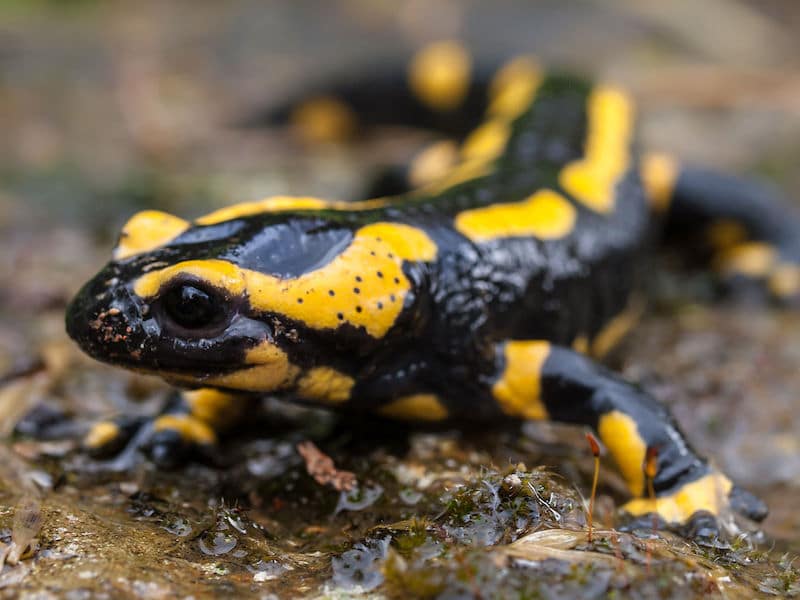
The fire salamander can be found throughout Central and Southern Europe. It is named not for its brilliant yellow stripes, but for the myth that they are immune to fire. Image: William Warby CC BY 2.0 DEED
The power symbolised by salamanders was so immense that King Francis I of France chose the species as his personal emblem. His motto – “nutrisco et extinguo” or “I nourish and I extinguish” tells us something of how the creature was viewed.
The salamander’s powerful fire could nourish the good– passion, faith and love – but it could also destroy the bad – guilty zeal, unjust war, lust, and injustice. For Europeans, amphibians were both supernatural saviours and deadly poisoners, symbols of healing as well as destruction, guardians of good and agents of evil.
Cultural narratives and global conservation
This duality speaks to humanity’s consistently ambivalent relationships with amphibians. On the one hand, many people appreciate their fascinating biology and ecology, and their unique position at the boundary of the aquatic and terrestrial worlds. Yet those same people often associate them with magic and the supernatural, fear they will be toxic, and approach them with mistrust.
In the UK, the experience of finding tadpoles in a garden pond is often a child’s first close experience with nature. Take Seamus Heaney’s iconic poem, “Death of a naturalist,” which captures the wonder of watching tadpoles hatch in the springtime:
There were dragonflies, spotted butterflies,
But best of all was the warm thick slobber
Of frogspawn that grew like clotted water
In the shade of the banks. Here, every spring
I would fill jampotfuls of the jellied
Specks to range on window sills at home,
On shelves at school, and wait and watch until
The fattening dots burst, into nimble
Swimming tadpoles.
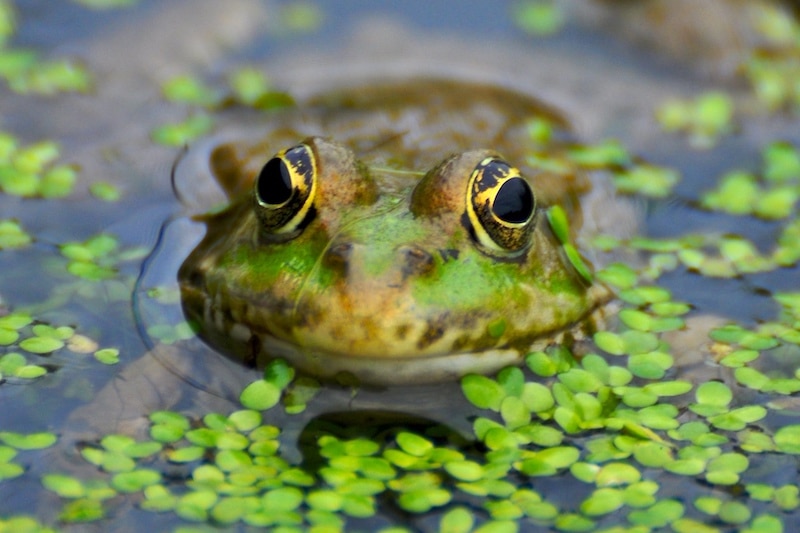
It’s hard to imagine anyone responding to Britain’s charming common frog with hostility, but persistent characterisations of frogs as poisonous, ugly, or gross powerfully shape perceptions of these species. Image: Martin Pettitt CC BY 2.0 DEED
Yet many adults are still wary of amphibians, despite their largely harmless nature on this island.
Similarly complex relationships with amphibians exist throughout the world. Many of Synchronicity Earth’s Amphibian Programme partners are, alongside their regular work, documenting, recording, and investigating the cultural significance of amphibians in their regions.
In this Amphibians and Culture series, we’ll look at how amphibians are understood in some of our partners’ countries, and share a few of the fascinating stories where they take centre stage.

